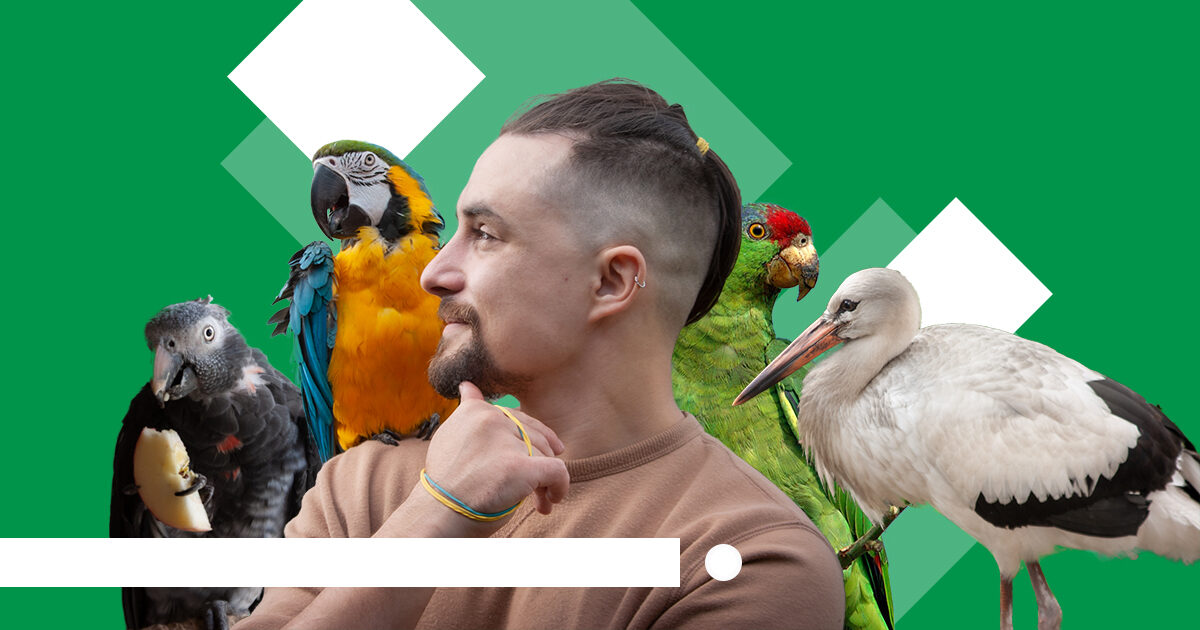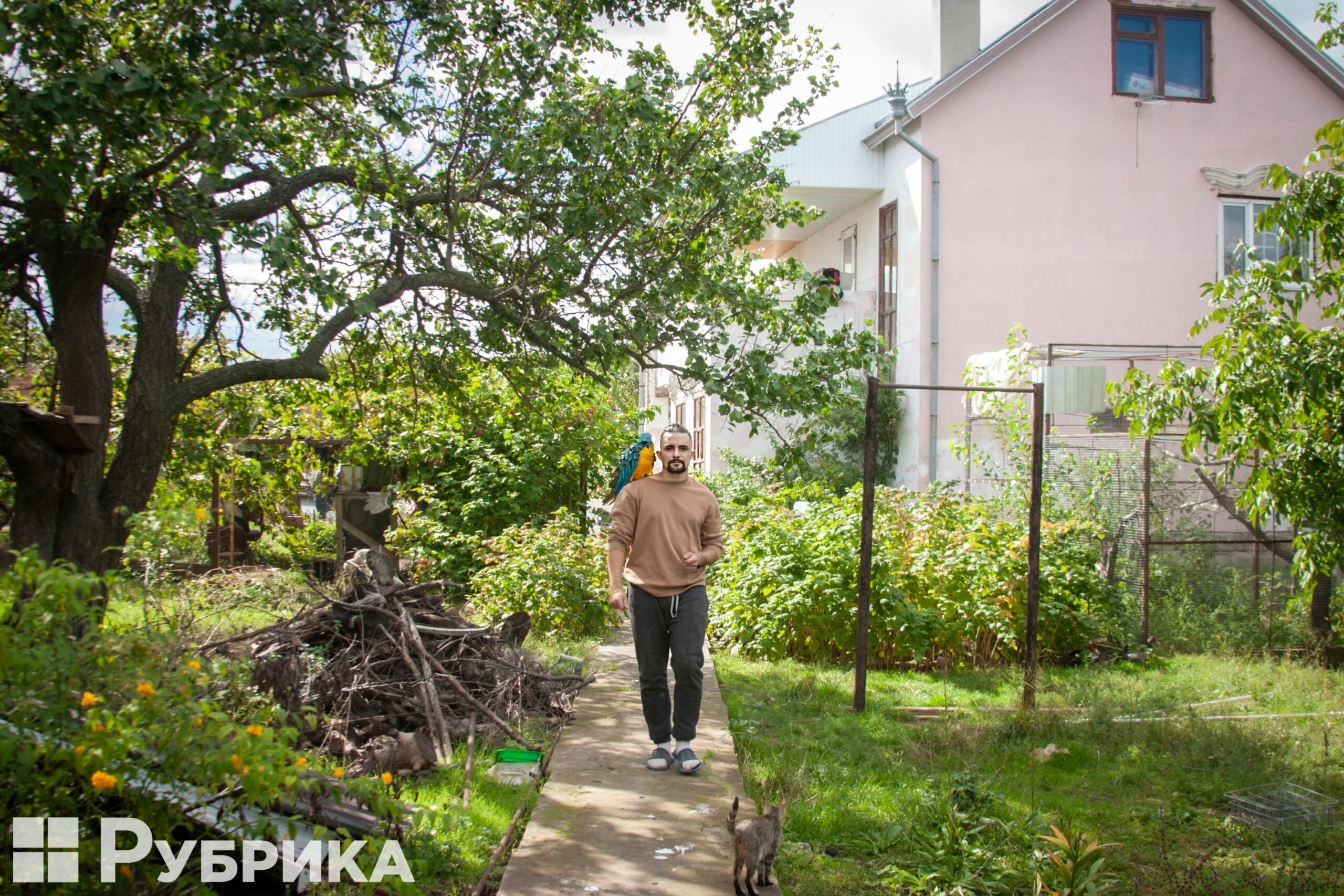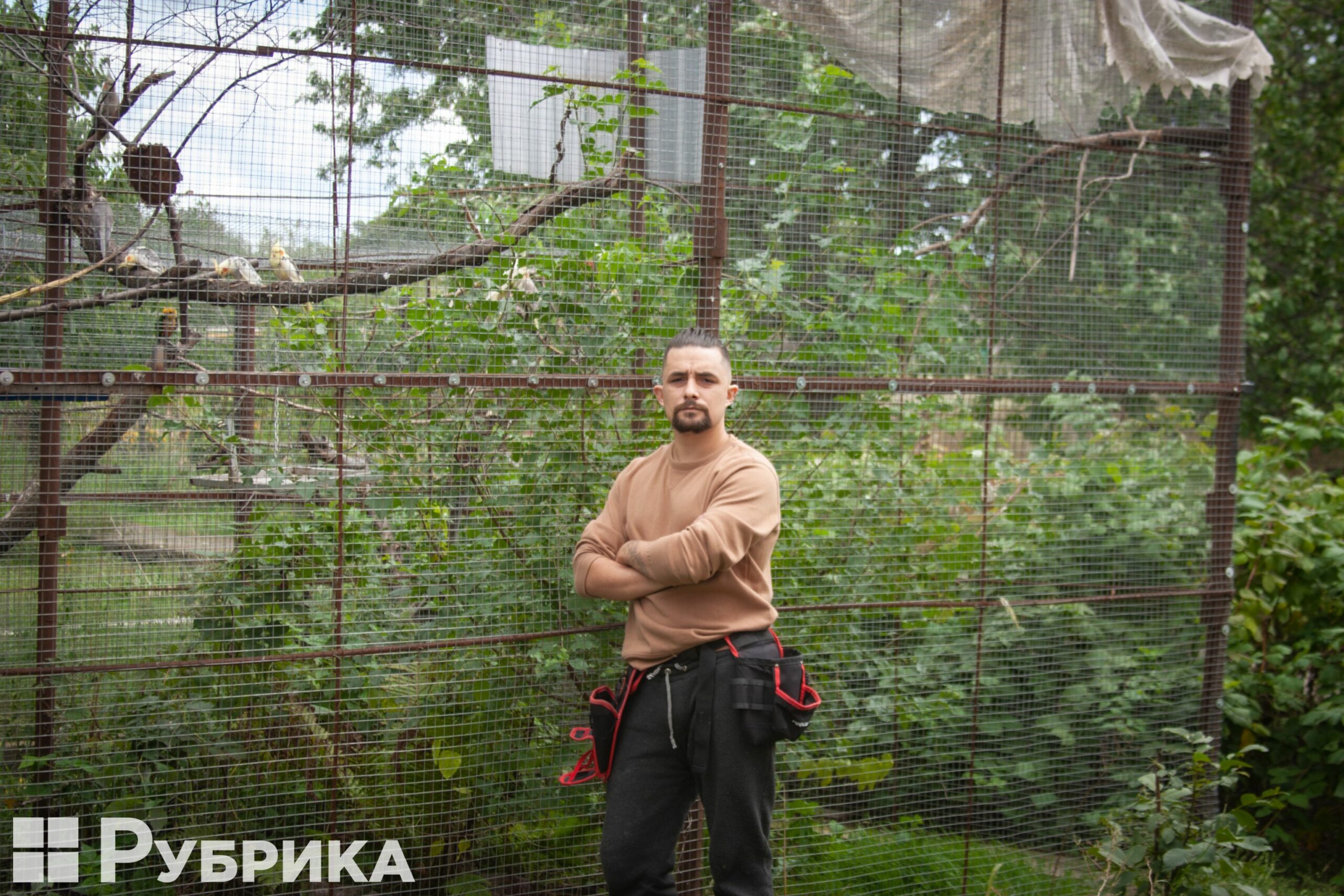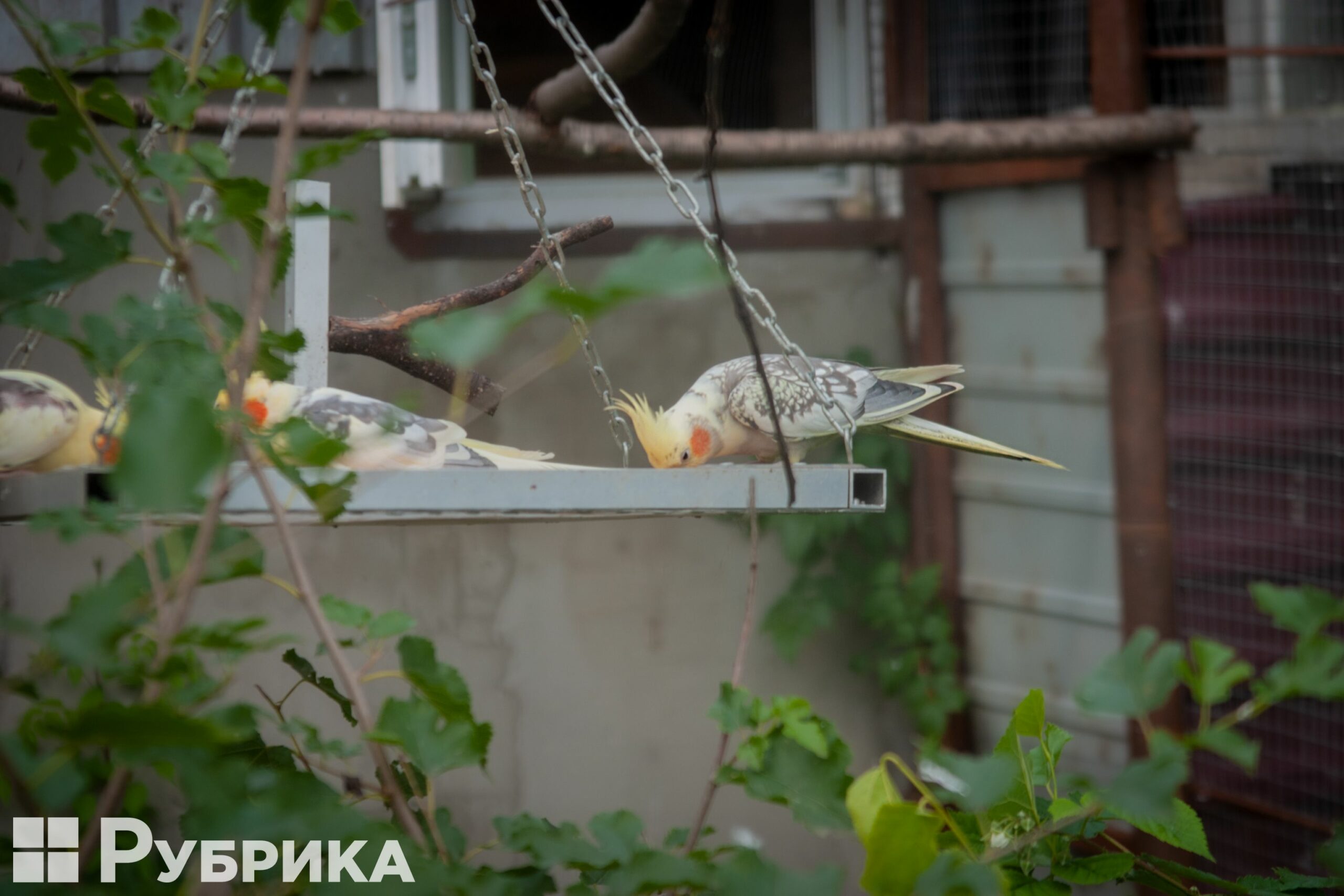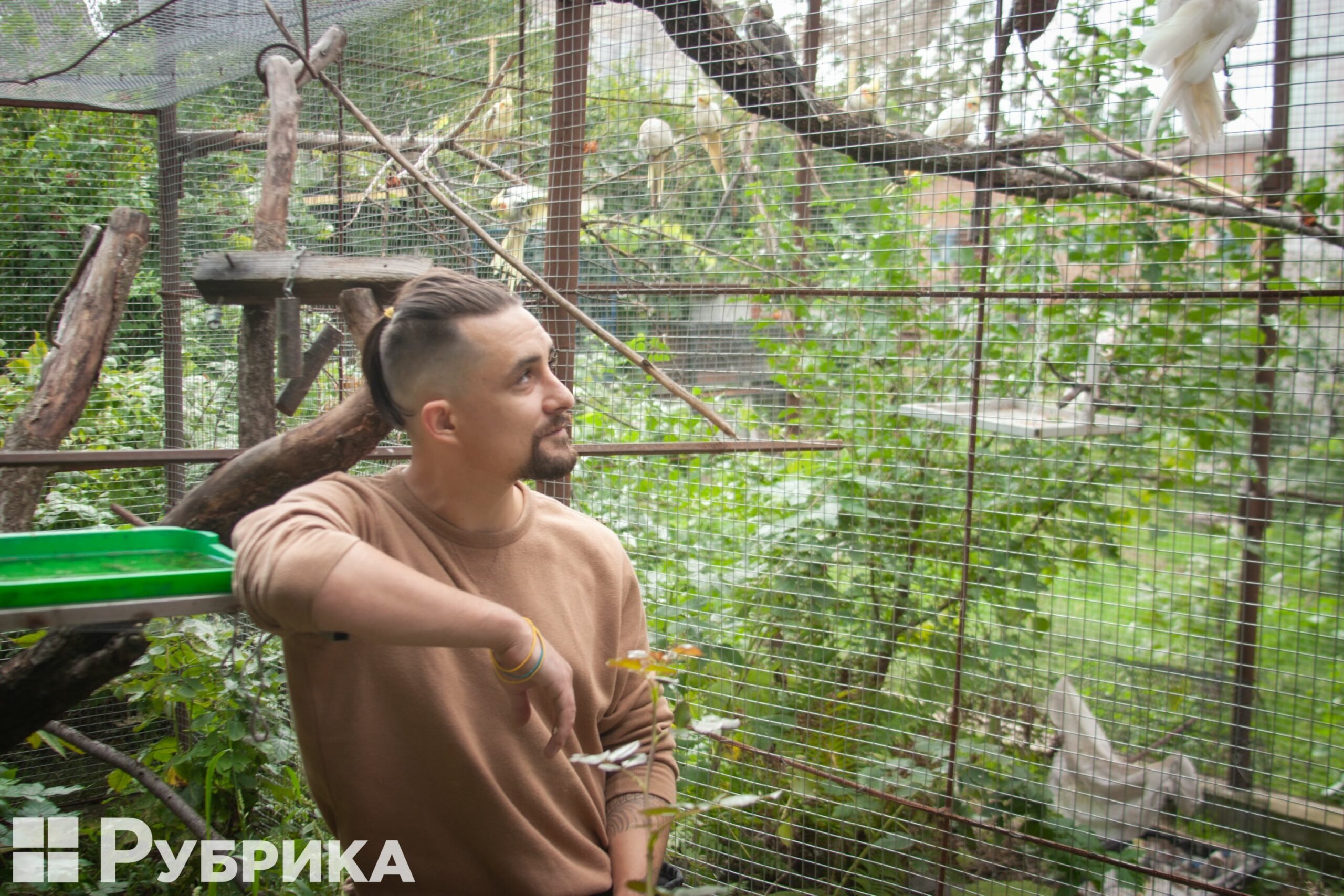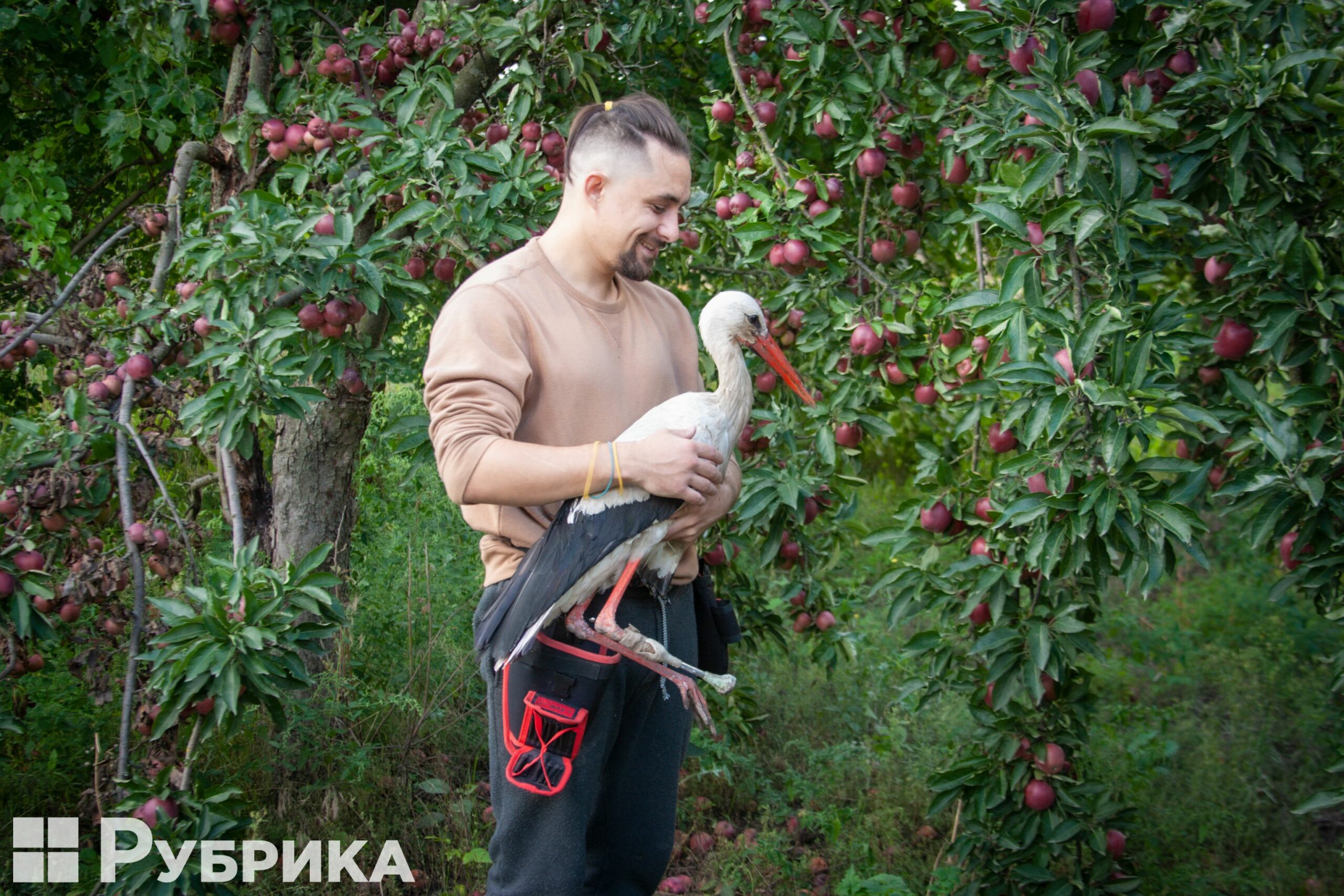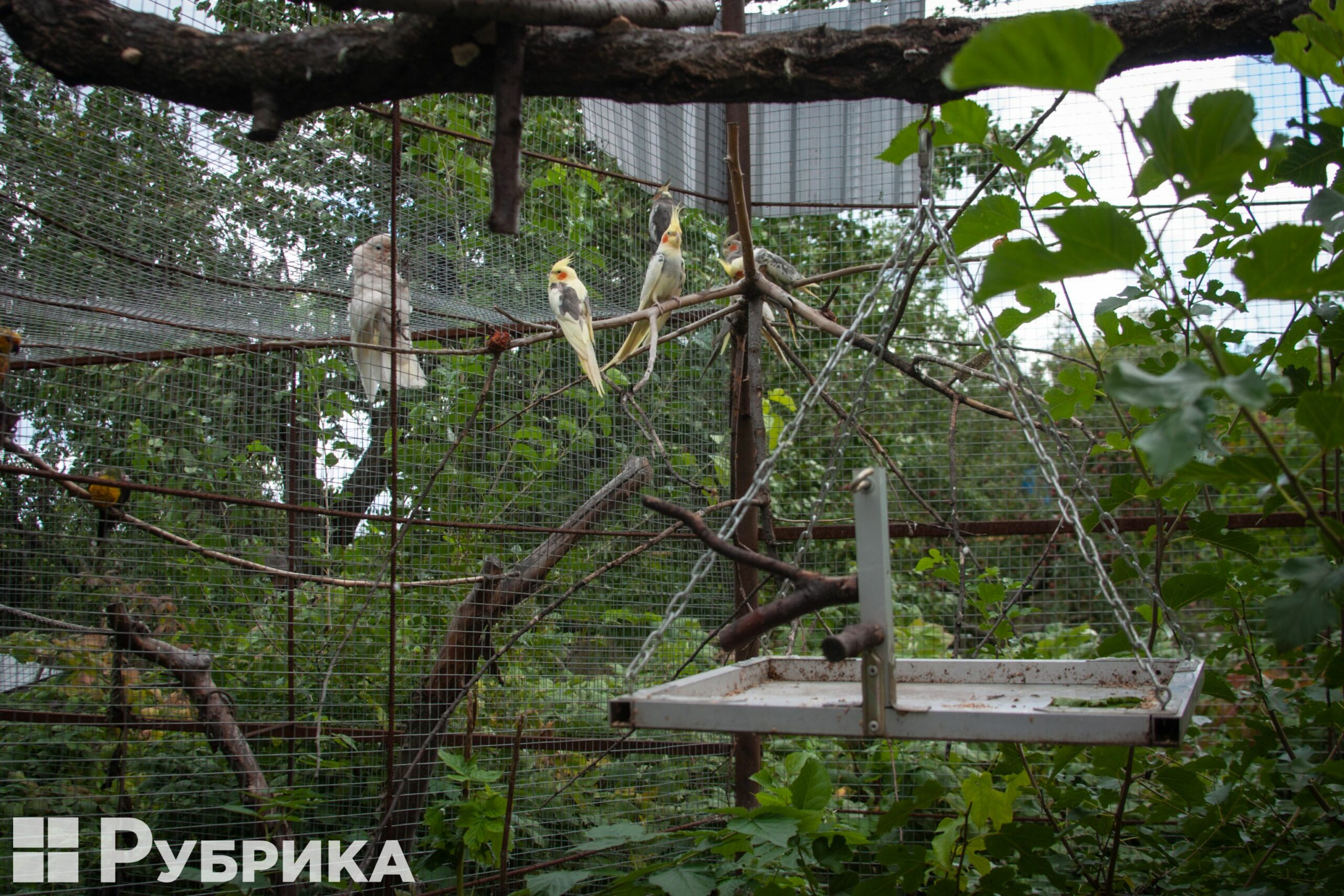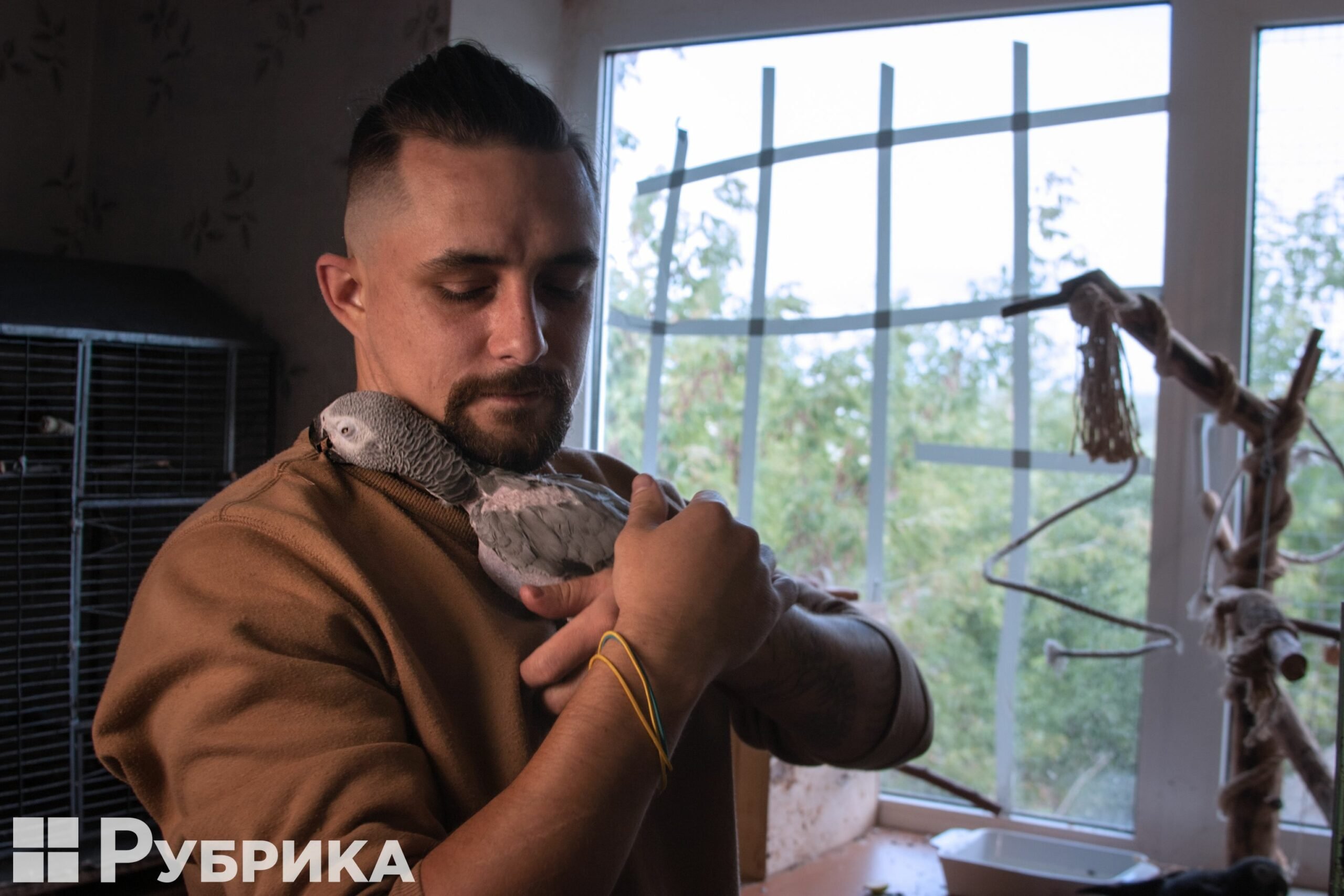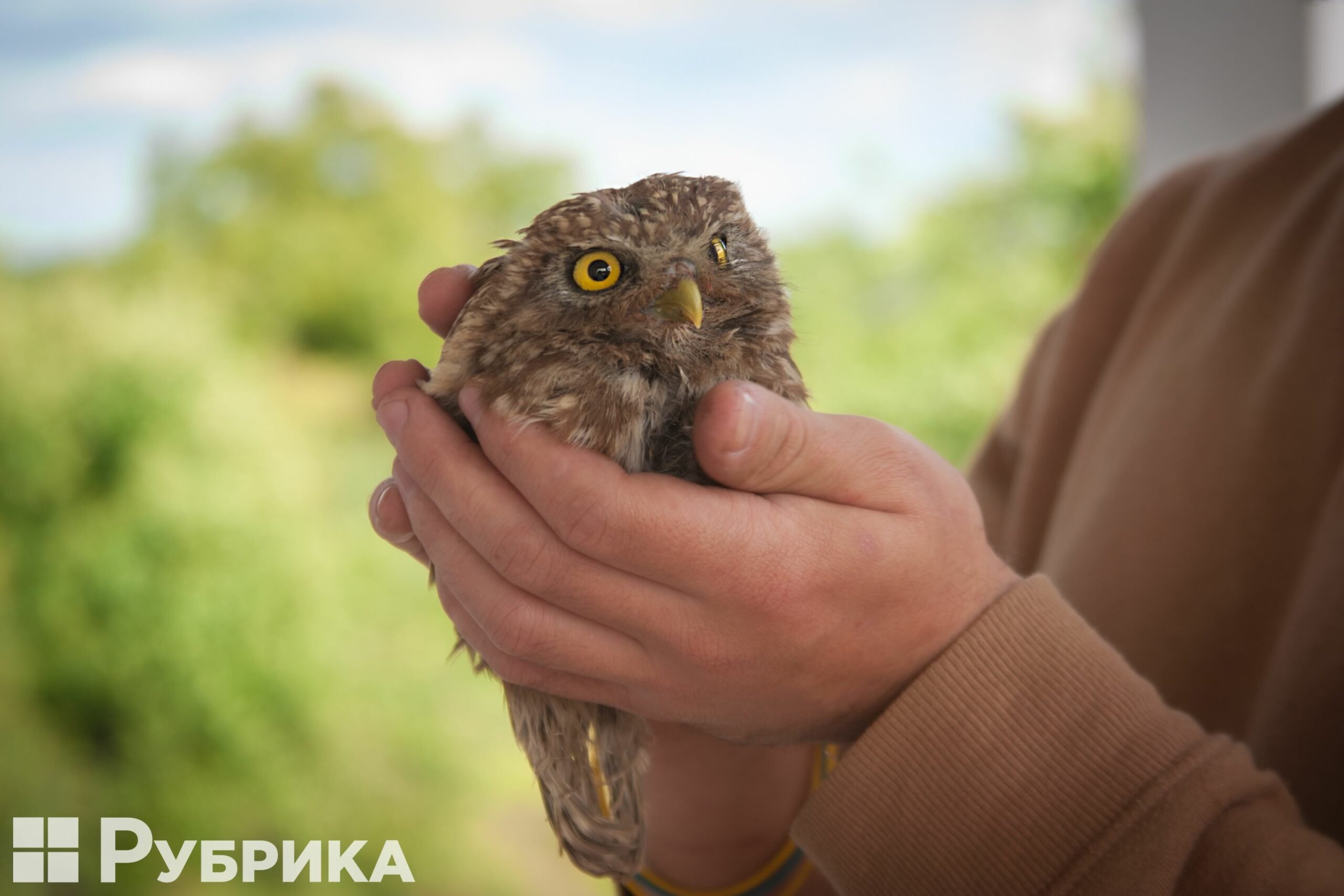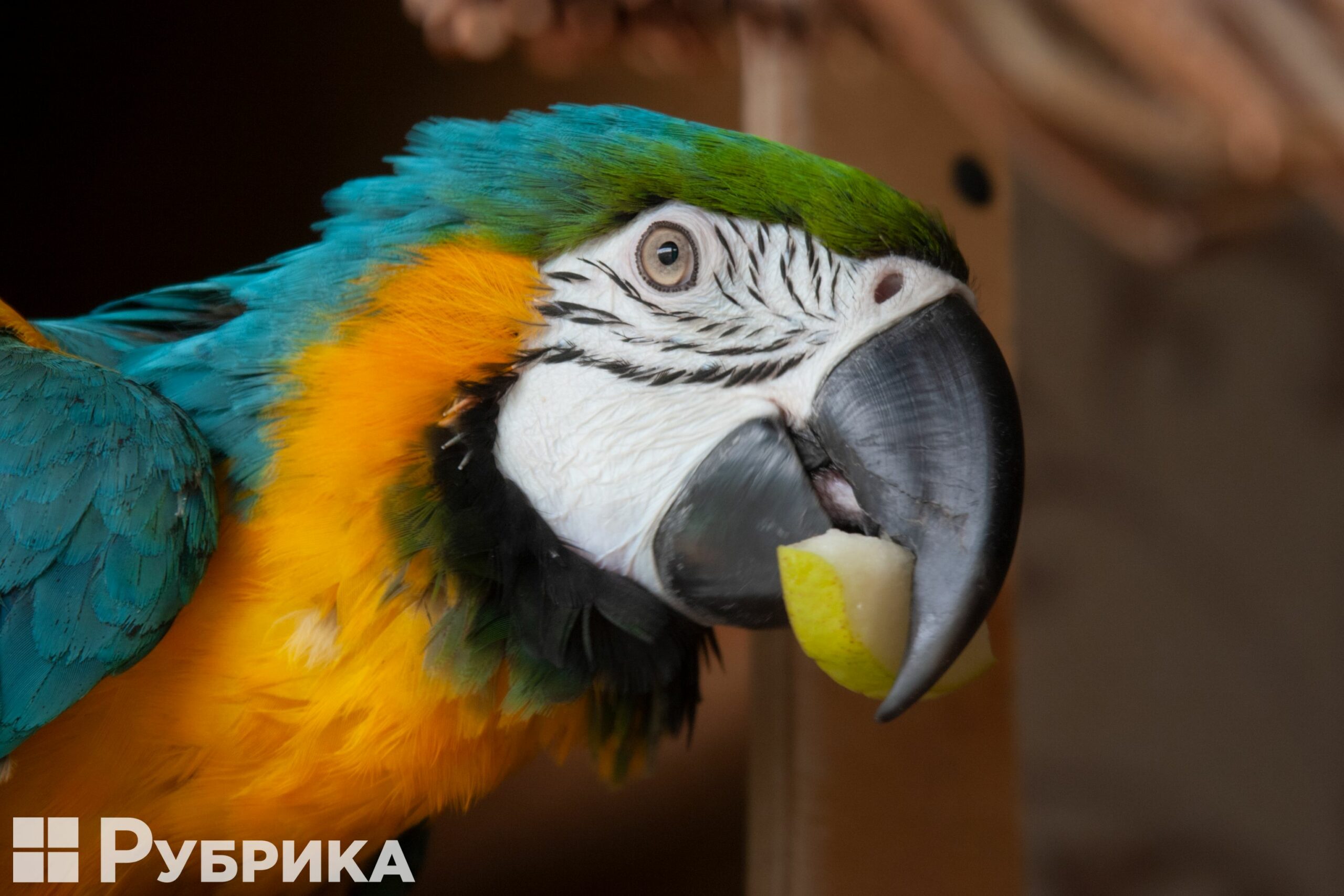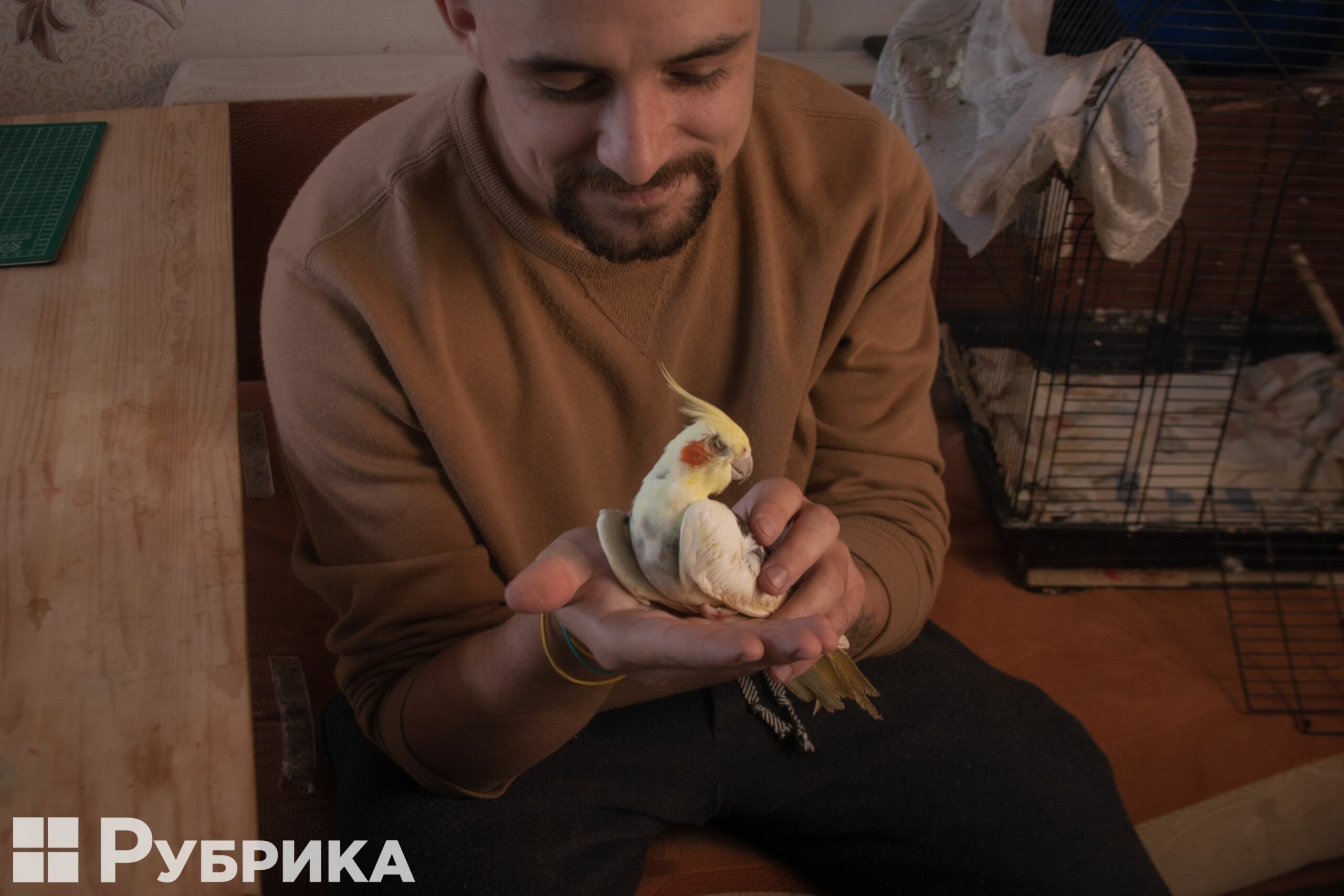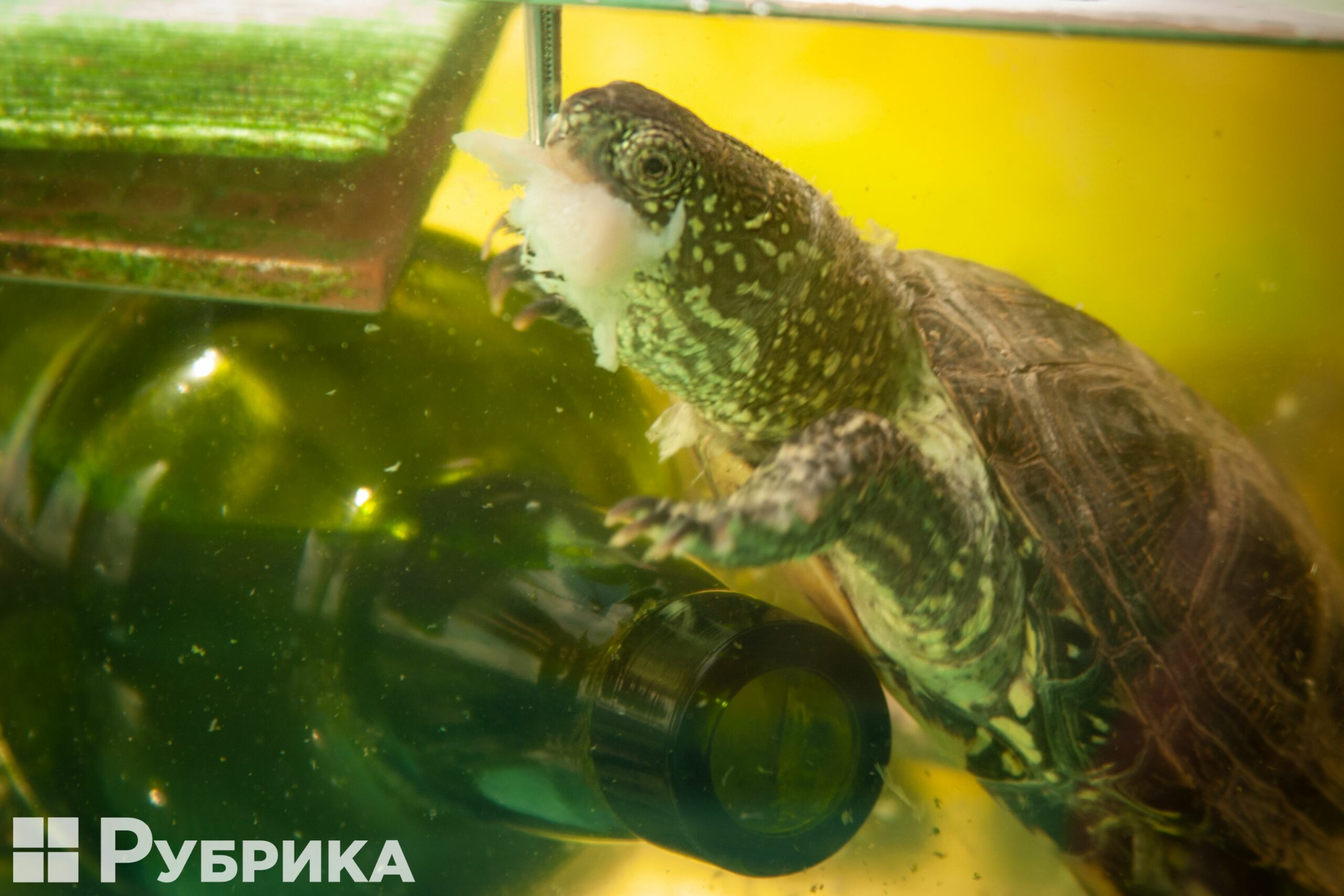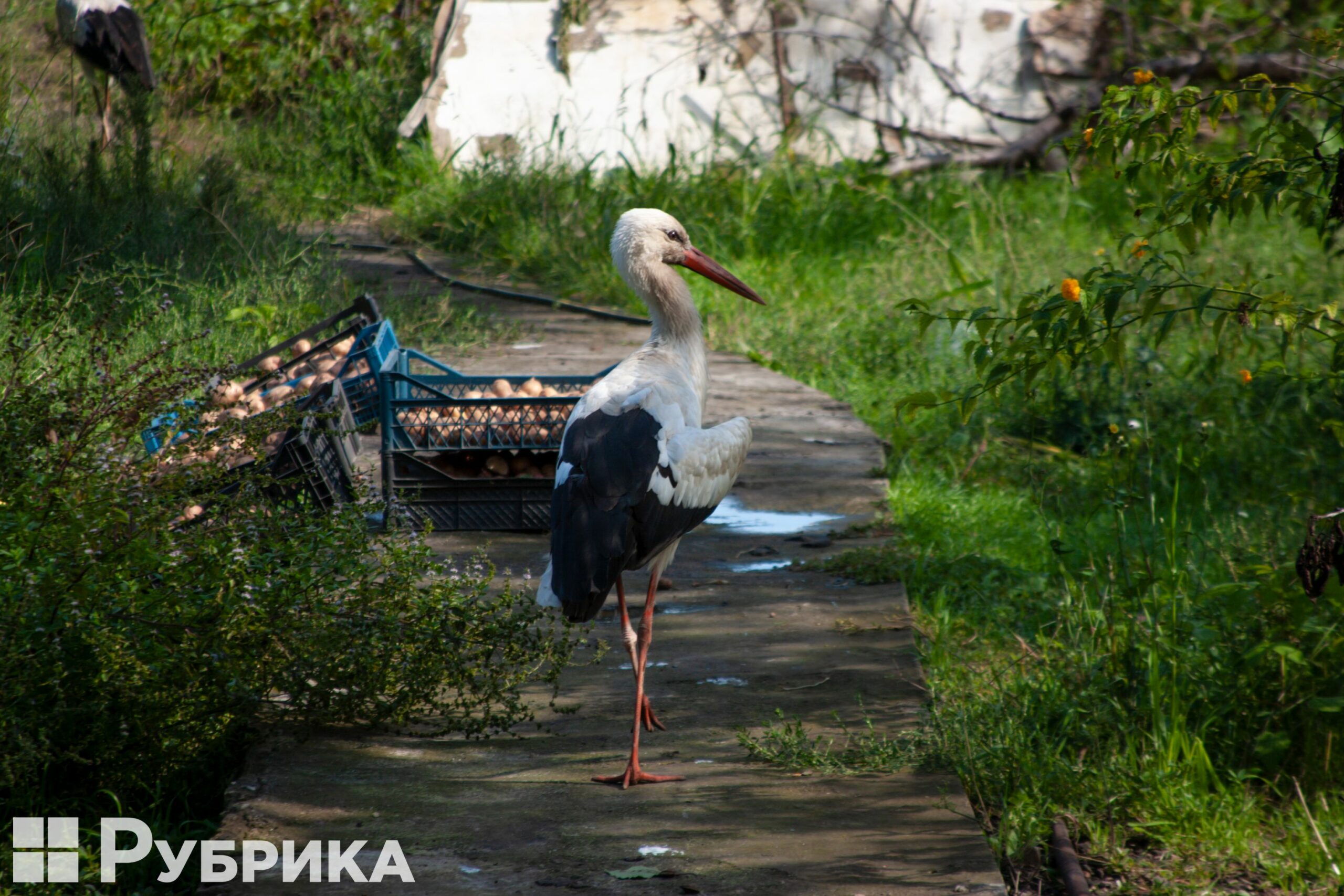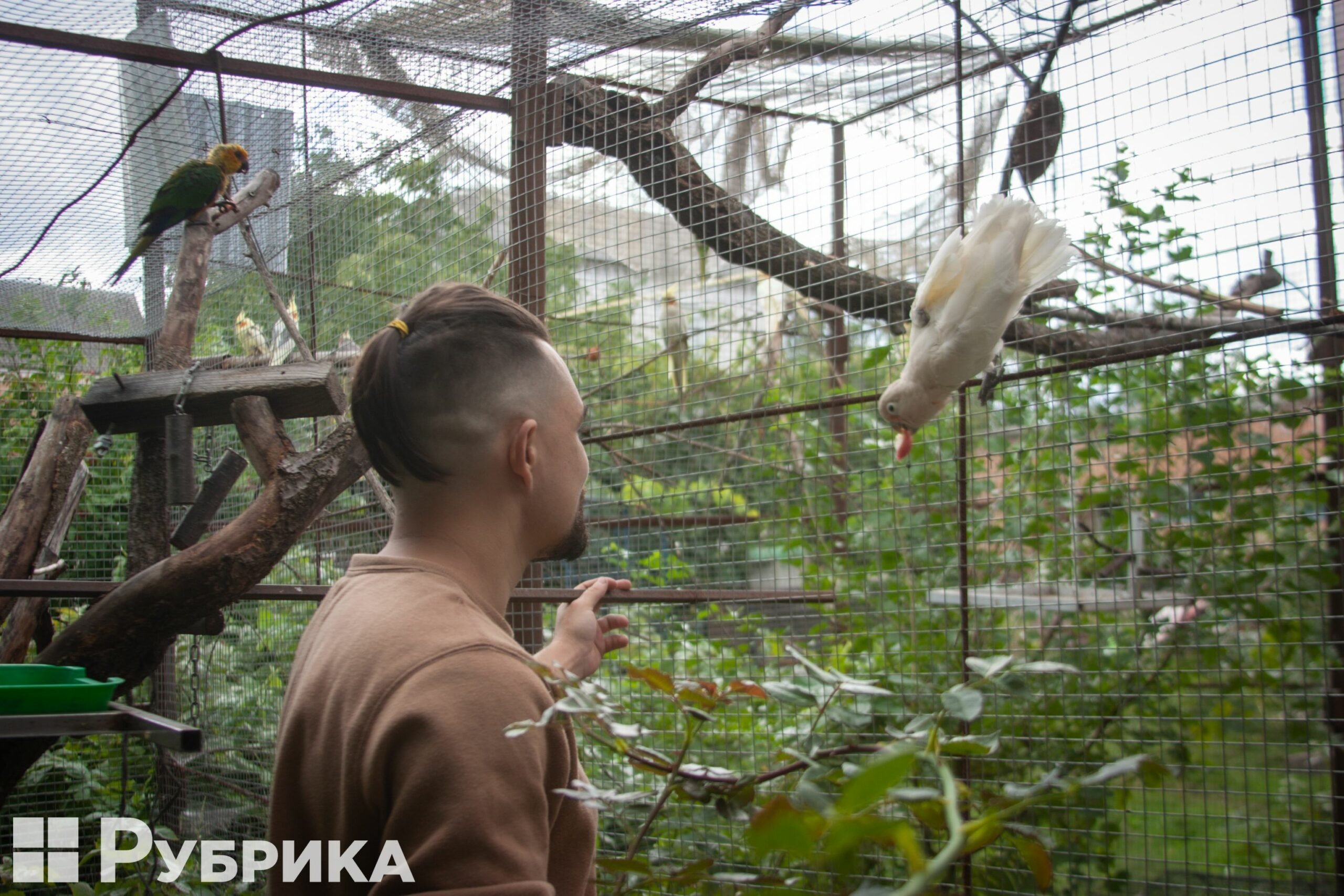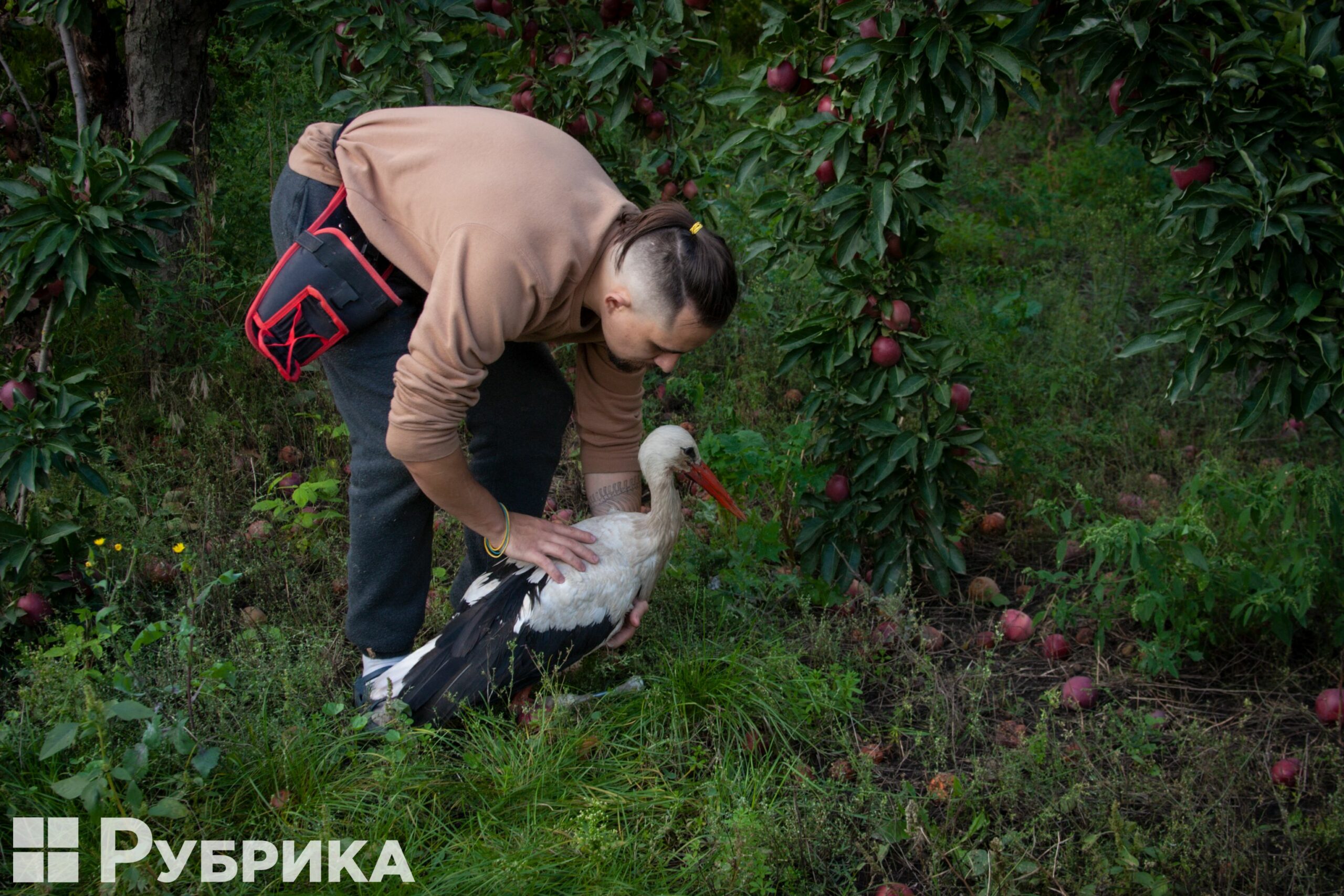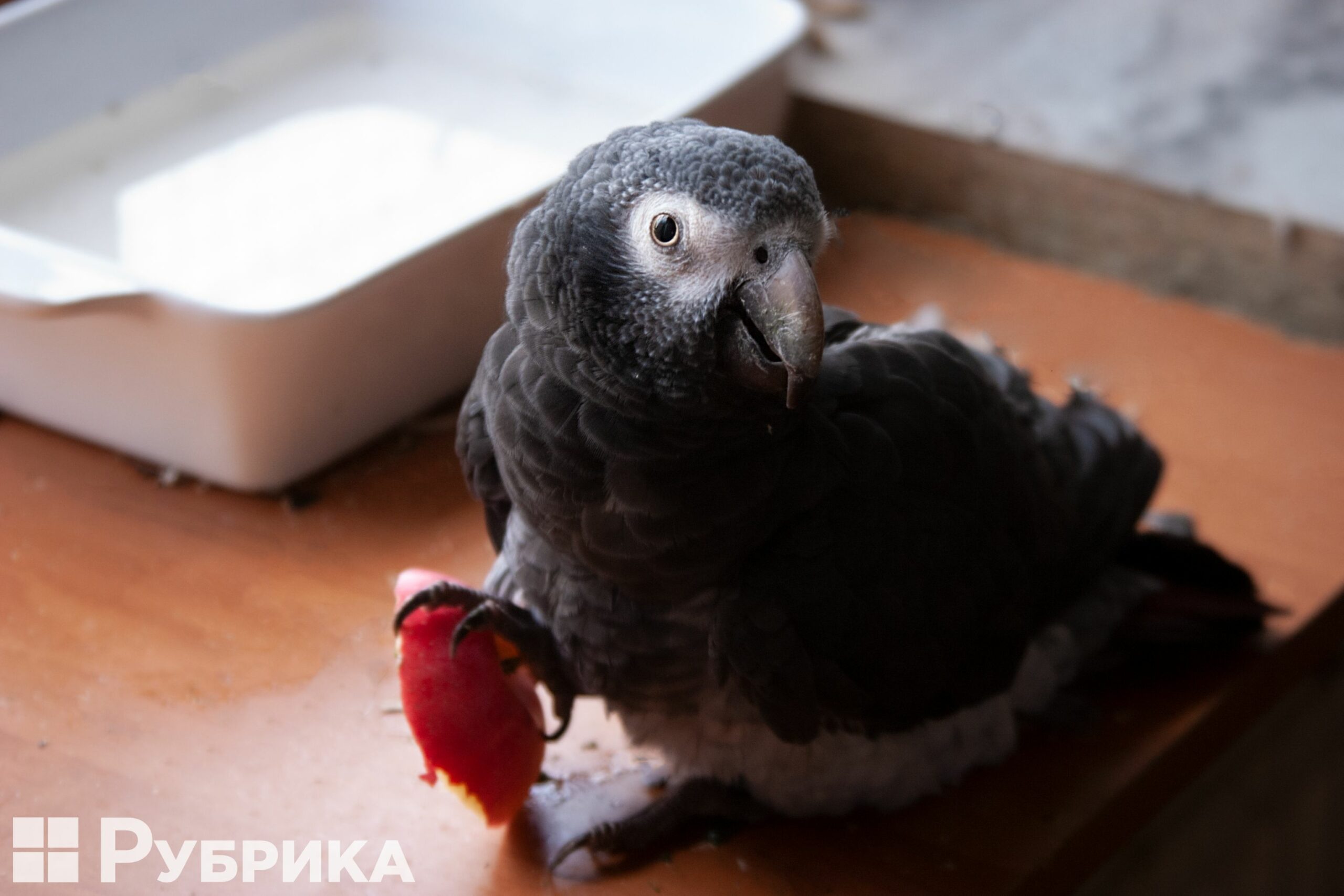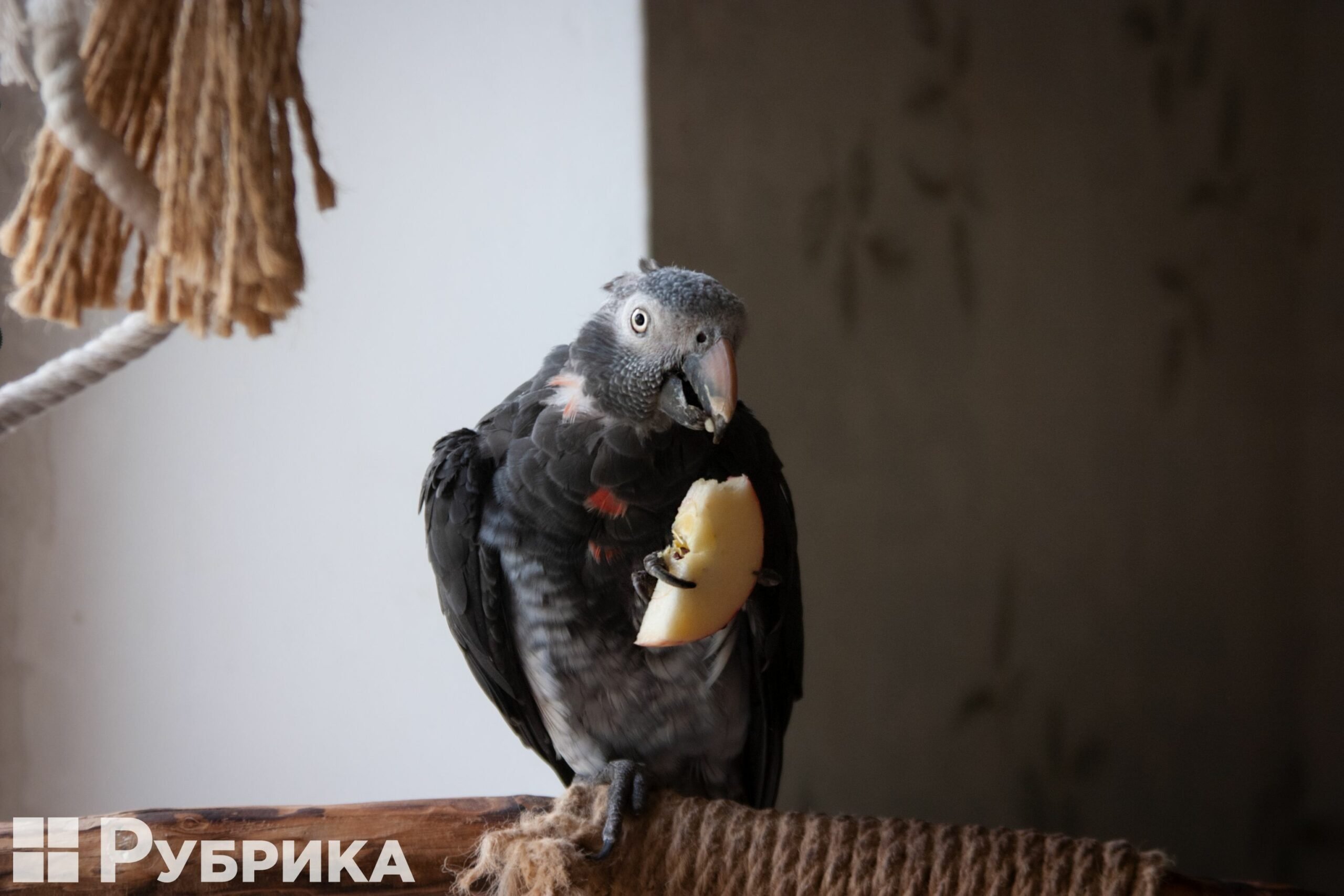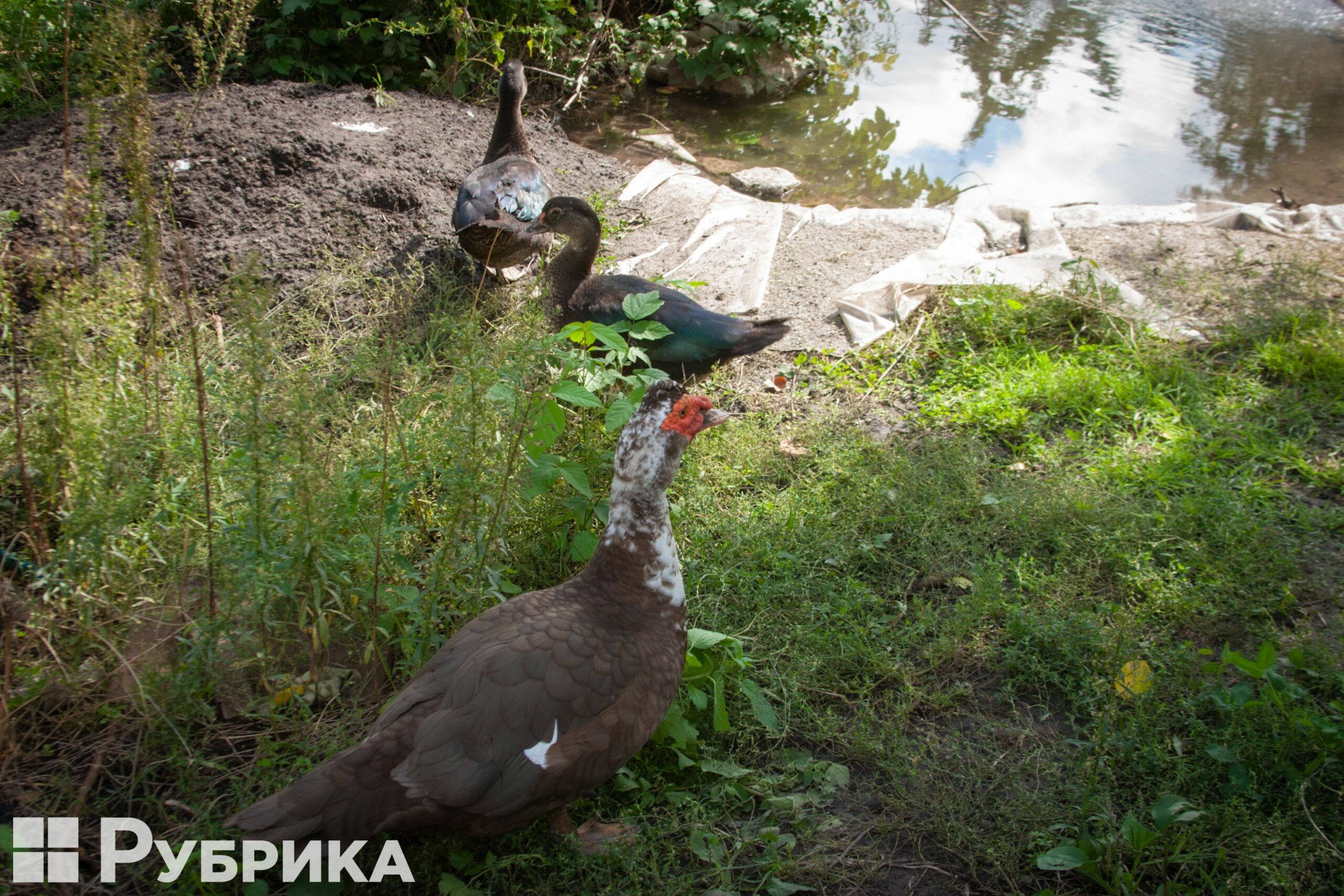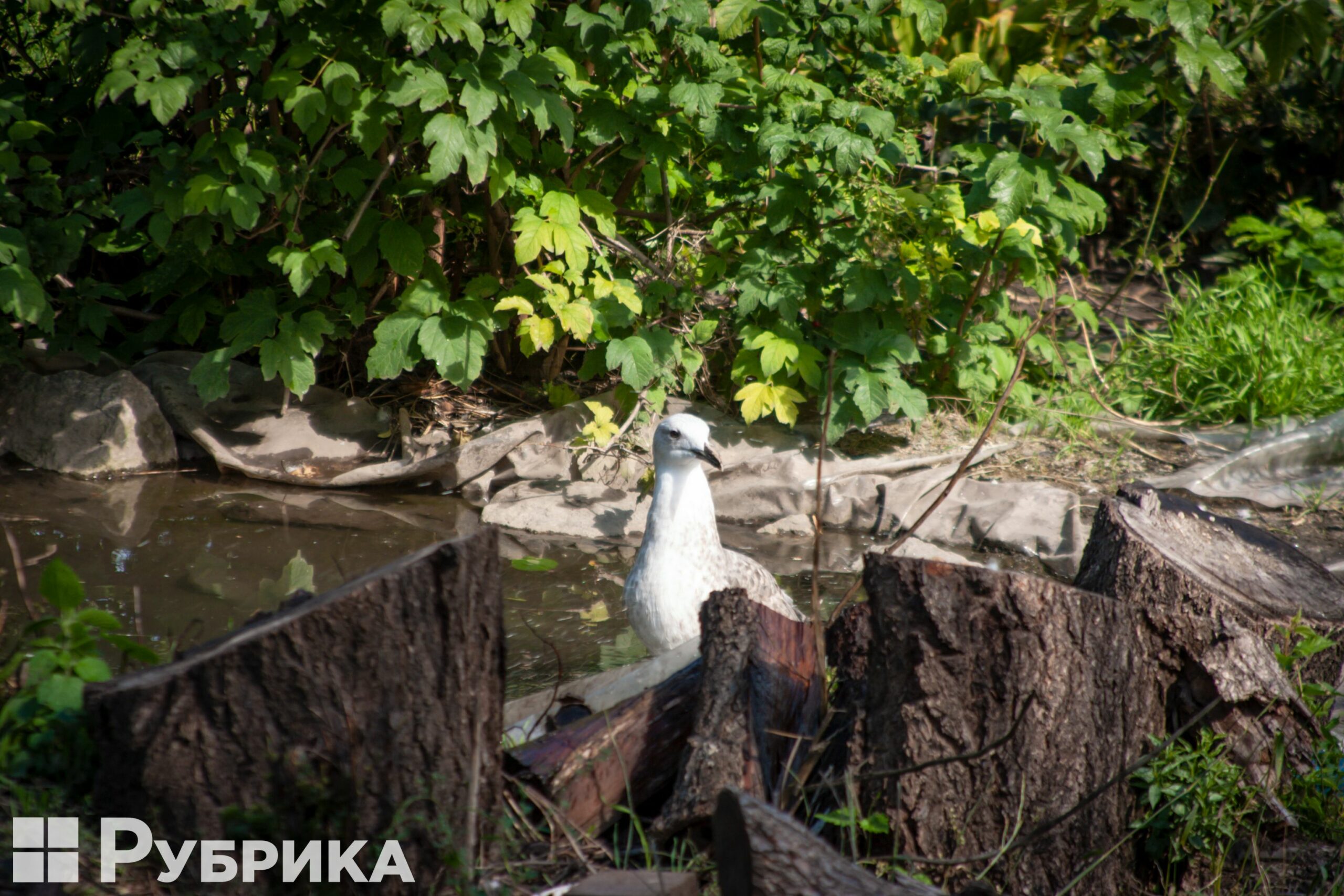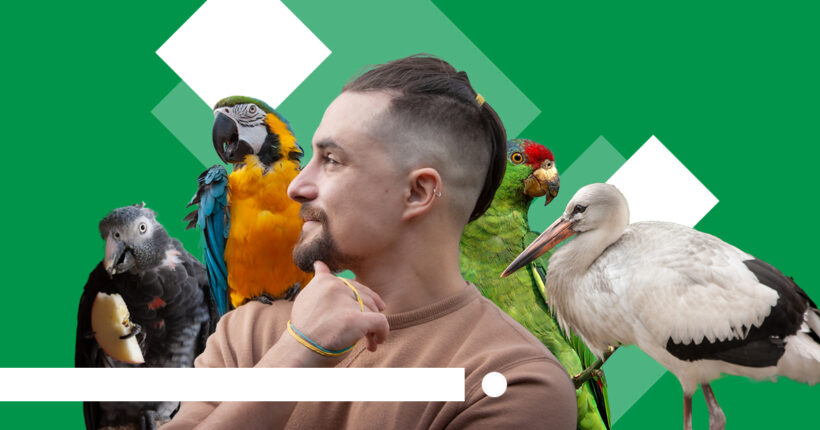
Stanislav from Kropyvnytskyi is one of the few doctor ornithologists in Ukraine and a veterinarian. Until 2018, Stas was engaged in exotic birds, studied them in Ukraine, and later was engaged in transporting them between zoos and breeders in Europe. Now he has a bird rehabilitation center in his backyard, treating disabled birds and providing them shelter and food.
Rubryka talked to the doctor and collected helpful tips for bird owners and those who like to watch birds in parks.
What is the problem?
The story of veterinary practice in Kropyvnytskyi for the ornithologist began as if it were the beginning of an adventure movie. During his work, Stas came across smugglers and fulfilled orders through contacts, not knowing that he was working with forged documents and that he was a figurehead. After that, naturally, he had problems with the police. The ornithologist had to pay for his credulity with four months in an Austrian pre-trial detention center, seventy thousand dollars, and a car.

After returning to Ukraine, Stas found those smugglers; they wanted to buy off a veterinarian—a deceived colleague—but our hero took crippled exotic birds instead of money. Among them was a hornbill with a broken spine and broken legs, who lived with Stas for two years:
"I cured him, but I could no longer return him to the natural habitat. So I built him a huge aviary, a winter room. But on New Year's Eve, he died because our neighbors, despite my warnings, started firing fireworks, and he was scared and hit the wall and crashed. He had a ruptured artery from the impact."
Fireworks are now a minor problem for birds in Ukraine. Explosions from fighting and shelling replaced explosions from fireworks.
What is the solution?
The story of the rehabilitation center began with the hornbill. Stas began to treat other birds and even placed some at his home.
Our hero lives outside the city, in his private house, and has land, so there is plenty of room for birds. Later, through the grapevine, people learned about the bird doctor and began to bring birds to Stanislav:
"I took a parrot from someone, another bird from someone, created conditions for their existence, and it is how the rehabilitation center grew. I try to release healthy birds as much as possible, but some return. For example, eagles and falcons fly away, but storks return," the doctor says.
"Perhaps they are better off with you?"
"Sure, it's better, but they eat six kilograms of fish a day!"
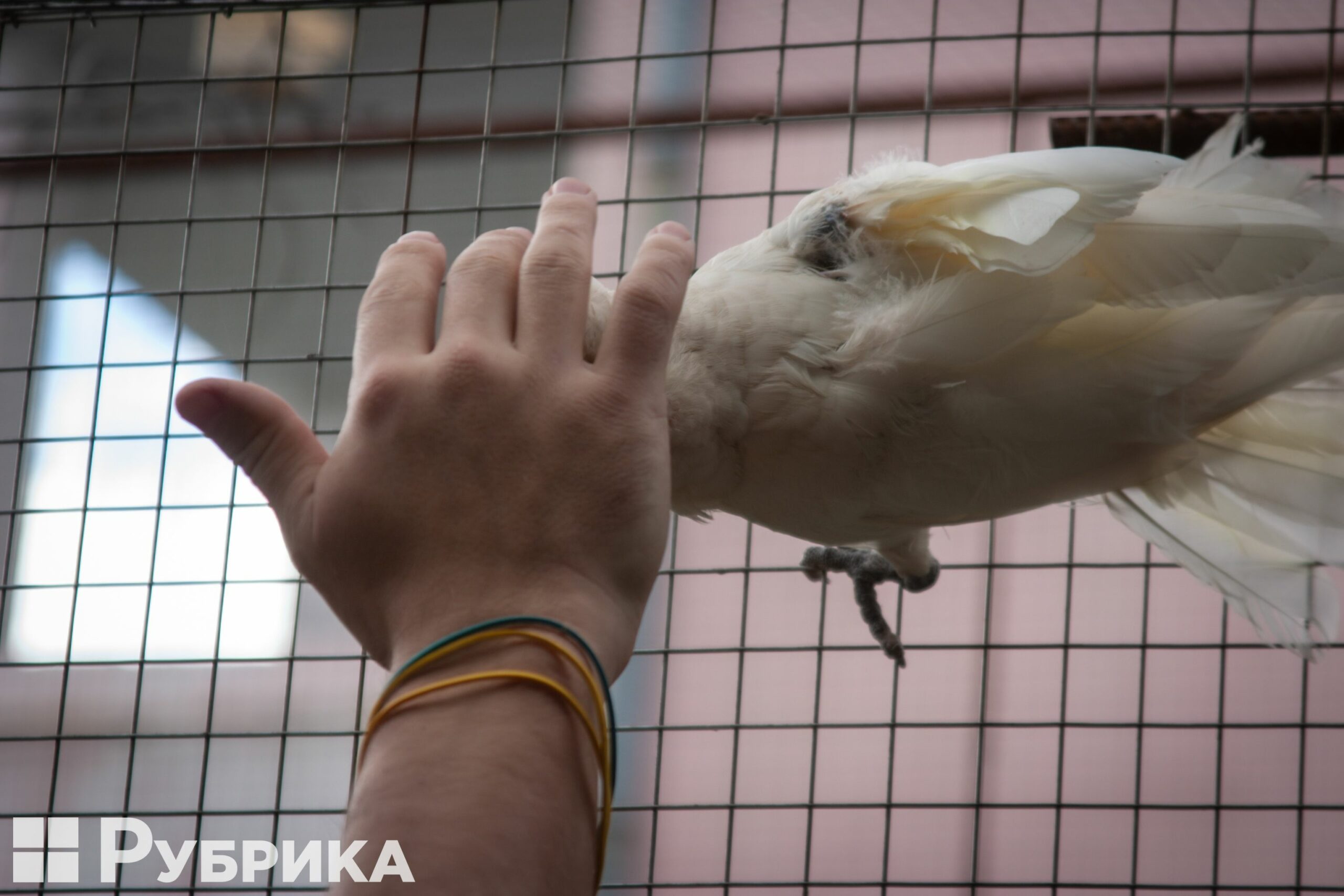
Birds affected by the war
About 50 winged residents are currently staying in Stanislav's center; three dozen are parrots.
These are birds abandoned by their owners, who realized that the pets were too noisy and rowdy, and birds that were rescued from smugglers. There is even a cockatoo among them.
The shelter also houses endemic wild birds from our area: storks, swans, common swifts, greenfinches, loons, crows, and others.

A macaw named Agusha is a bird rescued from an exhibition. He was given to Stanislav "practically as a corpse," and the owners promised to pay for him, but the cost of treatment exceeded the cost of the parrot itself, and the owners wanted to stop the therapy.
After the full-scale war started, the number of guests at the center increased. For example, a cockatiel was found in Kharkiv on the rubble of a house destroyed by a rocket.
The bird has one foot torn off, all the fingers on the other are missing, and the eye is hurt. Volunteers handed it over to Stanislav.
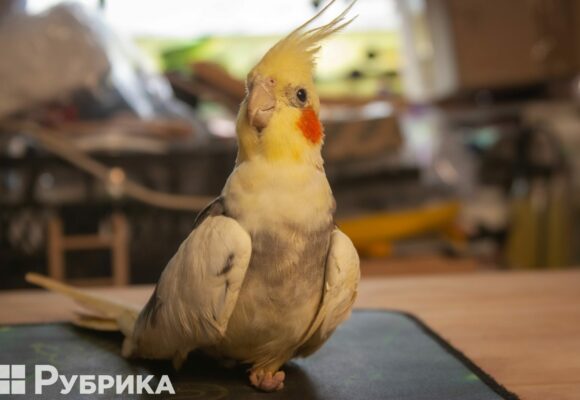
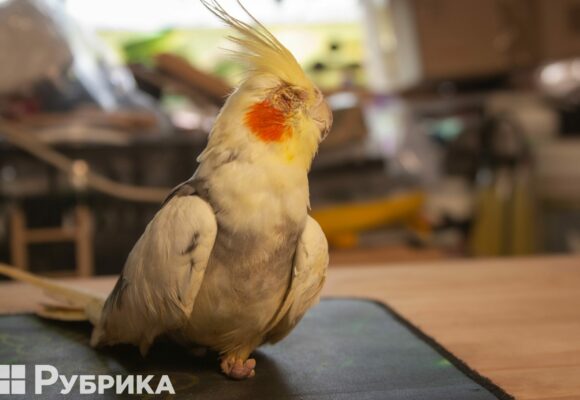
Some parakeets are waiting for their owners' return from Europe because they decided not to take the bird with them when they evacuated.
A turtle recently joined the feathered company.
Food security in your backyard
Six kilograms of fish per day for each stork is a tidy sum for the veterinarian because he maintains the rehabilitation center entirely at his expense. Add veterinary drugs and vitamins, costs for constructing enclosures, and cereal fodder, and it already comes out to about 13-15 thousand hryvnias per month.
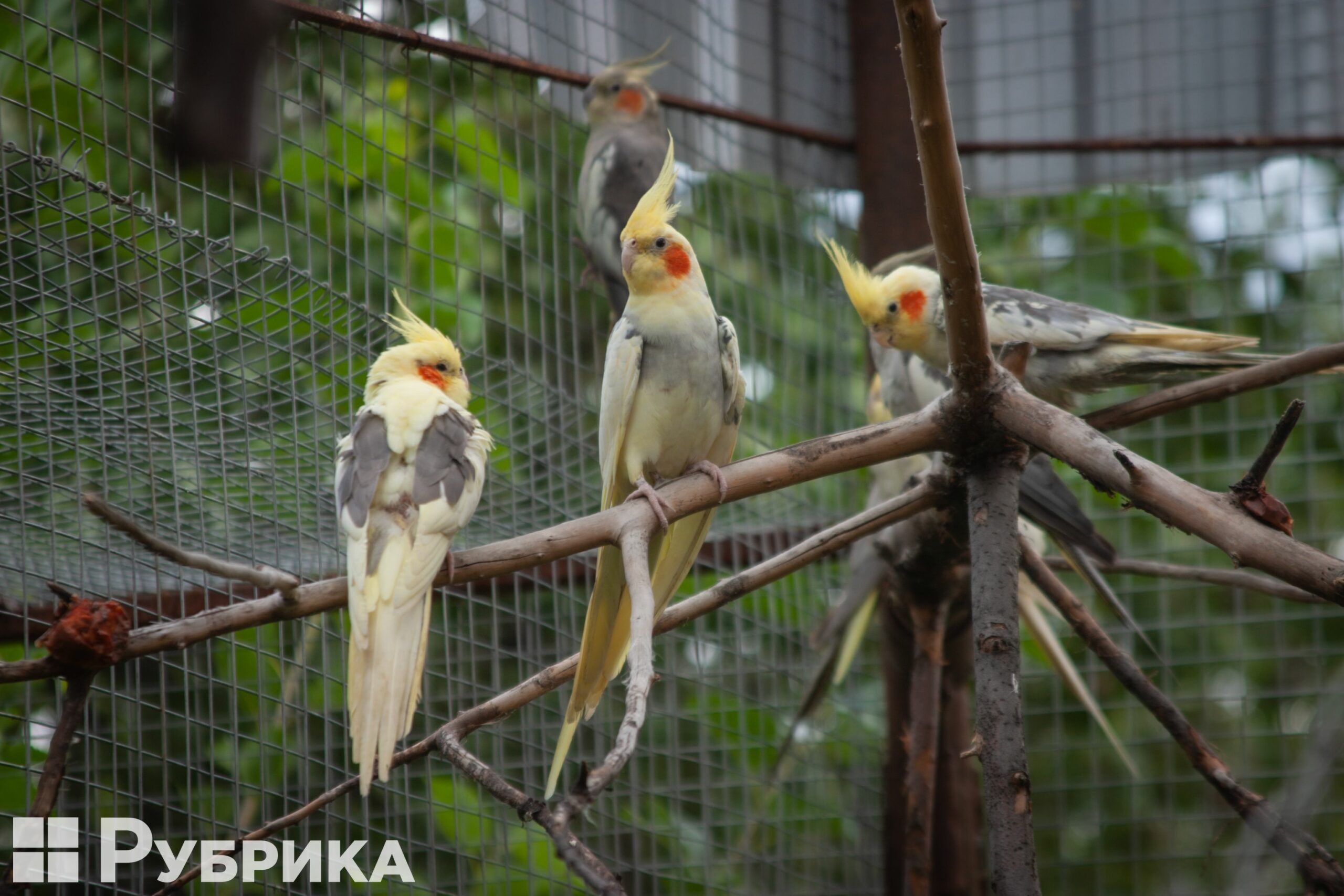
But the rehabilitation center is partially self-sufficient—Stanislav has his land and a garden with half a hundred fruit trees: apples, pears, cherries, black cherries, and vegetables and vineyards. All these fruits are included in the birds' diet in the shelter. So the doctor grows some of the food to feed the birds himself.
Recently, it has been possible to raise donations. The Poles from the Help Friends organization also help by sending fodder and medicine. How to help the ornithologist doctor and his ward birds? We'll explain at the end.
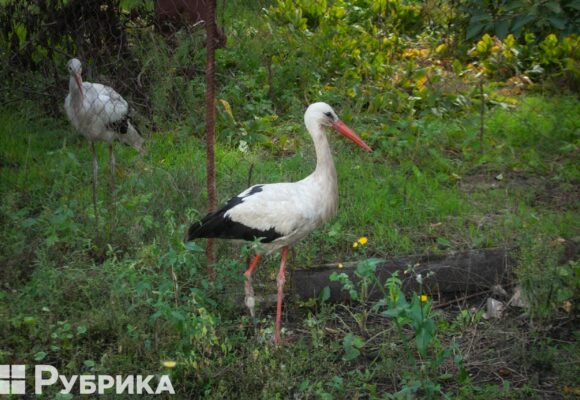
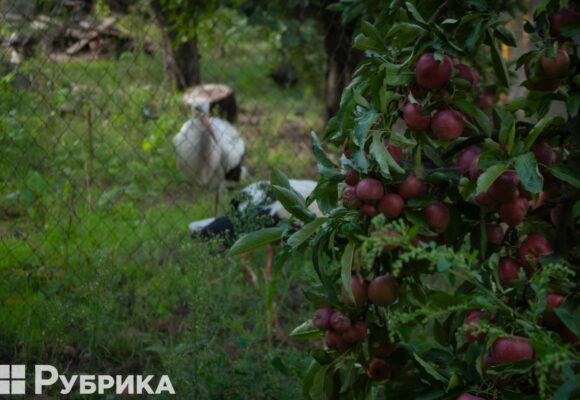
Turning the rehabilitation center into the park
There is a city park in Kropyvnytskyi, and the ornithologist Stas has an idea to make a larger rehabilitation center on the free territory there and open a "bird park" where people can be introduced to the rules for keeping birds:
"So that the townspeople could come and learn about the problems that await them if they want to get, for instance, a parrot, and along the way, treat and save birds," says Stanislav.
If everything goes well, the birds will receive larger enclosures, and Stas will receive additional funds for feeding and treatment. In addition, it will be possible to involve other people in work because Stas currently does all the tasks himself: builds, collects fodder and treats birds, but in the future, he would like to do only veterinary work.

How to prepare a bird for evacuation?
- Buy bird tranquilizers.
Birds have a sensitive nervous system, so loud explosions, and other sounds frighten them, so they start flying erratically and often crash into walls or cages, get injured and die. To prevent this from happening, purchase appropriate drugs at a veterinary store. In-home use, the doctor advises using the medicine Nekton relax.
- Build a plywood box for the bird.
It's impossible to evacuate the bird in the cage. The best solution is to build a plywood box that opens and closes. Make ventilation holes in it and install a low fence where the bird can sit. Water is not put in the box, only food.
It is better not to use a shoe box if it is not a budgerigar but a giant bird: in stress, the bird starts to gnaw at everything it sees and can easily chew the cardboard and fly away. In addition, you can accidentally sit on the box or easily damage it with the bird inside.
- Stock up on twigs.
In addition to food, you can put young tree shoots in the box. "For birds, it's like a salty straw for people. You can gnaw it as much as you want," the doctor advises.
How should you deal with birds in cities?
If you live in the city, you will most likely notice sick pigeons. Someone calls pigeons winged rats, and it's also known that city pigeons are the worst parents because they can have three twigs thrown on a concrete balcony for a nest for chicks. It's not the case, and Stanislav explains:
"Healthy pigeons build normal nests, but those living in cities don't keep up with human development. They have too many places to hide and don't need to forage for food. They have a terrible diet for birds, feeding on garbage. Because of this, they reproduce too actively, many of them get sick, and sick and weak pigeons don't have time to build normal nests. This makes the whole species weak and impatient, and eventually, it can lead to pigeons' extinction."
People "drive" birds to the cities; for example, ravens, which are supposed to live in forests and be health workers there. Farmers treat the fields with chemicals to poison the insects, but the birds die. Last year, ornithologists counted about 50,000 dead storks.
So what should we do to protect urban birds?
- You can feed only tits with lard or panicgrass.
Stas recommends that people ignore birds because most people don't know how to feed them properly: birds cannot eat bread and dairy products. You can feed birds only in winter.
- Ignore the birds on the water bodies.
You cannot feed swans, ducks, and other birds on water bodies because hunger is the primary instinct for these birds to fly to warm places. When a duck eats what people feed it daily, it remains on the pond for winter. But when the cold starts, people stop walking in the parks and feeding the birds, and they can die in whole colonies.
"Last year, we had about 30 swans left in our resting places. These birds froze into the ice. We saved two, and they had to have their wings amputated," the doctor recalled.

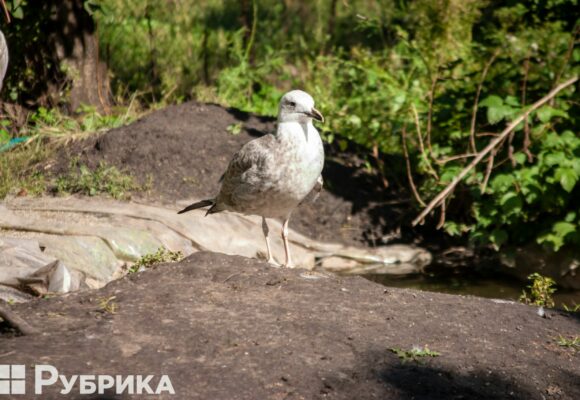
What do you need to know before having a bird?
- Be prepared for a mess.
Birds are destructive by nature, so they constantly crush, gnaw and break something. This is a genetically directed function because they have to regenerate forests; that's why they continuously pull branches and litter. They can turn a one-room apartment into a giant dump in half a day. The same cockatiel scatters seeds 5-10 meters around itself, and it is impossible to accustom the bird to different behavior.
- Birds will chew through all your wires and everything else.
Birds are interested in electricity because they can see electromagnetic fields with their eyes. Therefore, be prepared that the birds will chew through all the wires and everything else they find, even the wallpaper. They will dig holes in the walls and hide food there. That is why it is crucial to monitor them, letting them out of the cage only under supervision.
- Find a seat near a window.
Birds see everything in the ultraviolet spectrum, 100,000 more colors than we can see. Thanks to this, they never get lost and always find their way. Without UV, their abilities are lost, and when they live in poorly lit apartments, they have poor color vision, and their superpowers of orientation are lost.
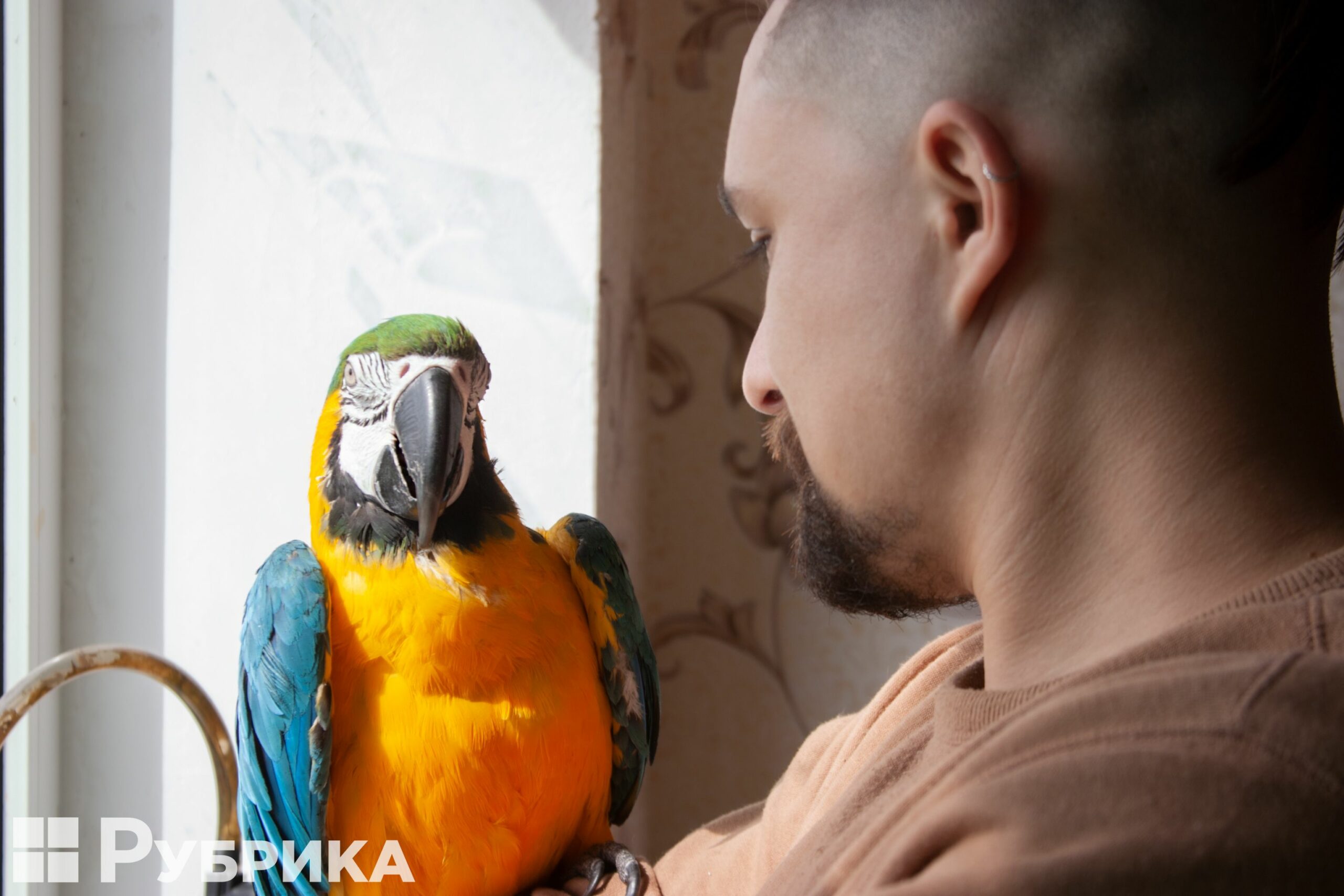
How to help the ornithologist doctor and his wards?
You can help take care of birds in winter when they freeze or rescue them from war zones and save them from injuries and diseases. For this:
- Share Stanislav's story with your friends
- Follow @bird_shelter_international on Instagram, where you can watch the exciting life of birds at the rehabilitation center.
- See @bird_shelter_international for financial assistance details. The center can save a bird's life and purchase medical drugs or feed with your donations.
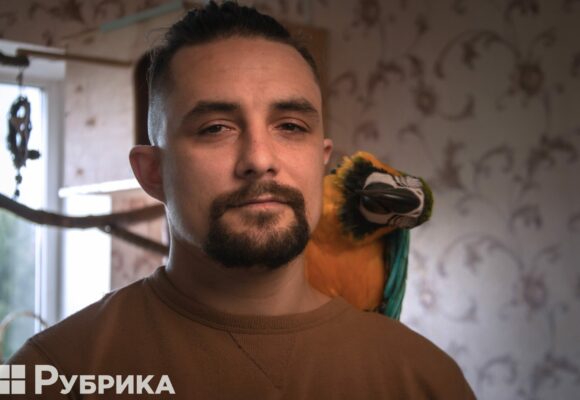
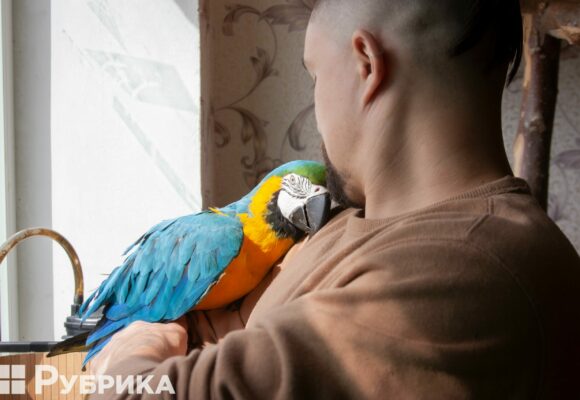
Photo: Iryna Lisovska, for Rubryka

Sheltering a homeless animal is not scary! How Leia became part of Rubryka team

Evacuating flock of sheep across Ukraine and finding new home: incredible story of Donetsk farmer

Milk for donations, white hellebore for russians, and incredible people: how farmers in Kyiv region survived hostilities
Newsletter
Digest of the most interesting news: just about the main thing



